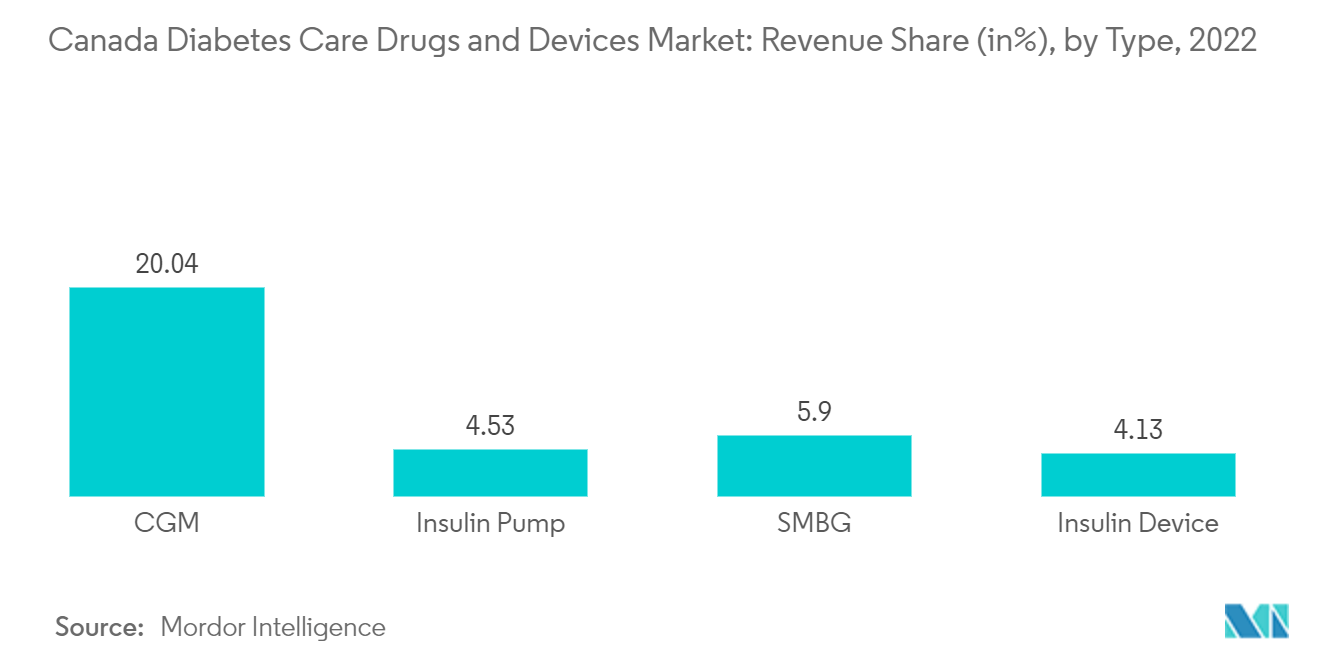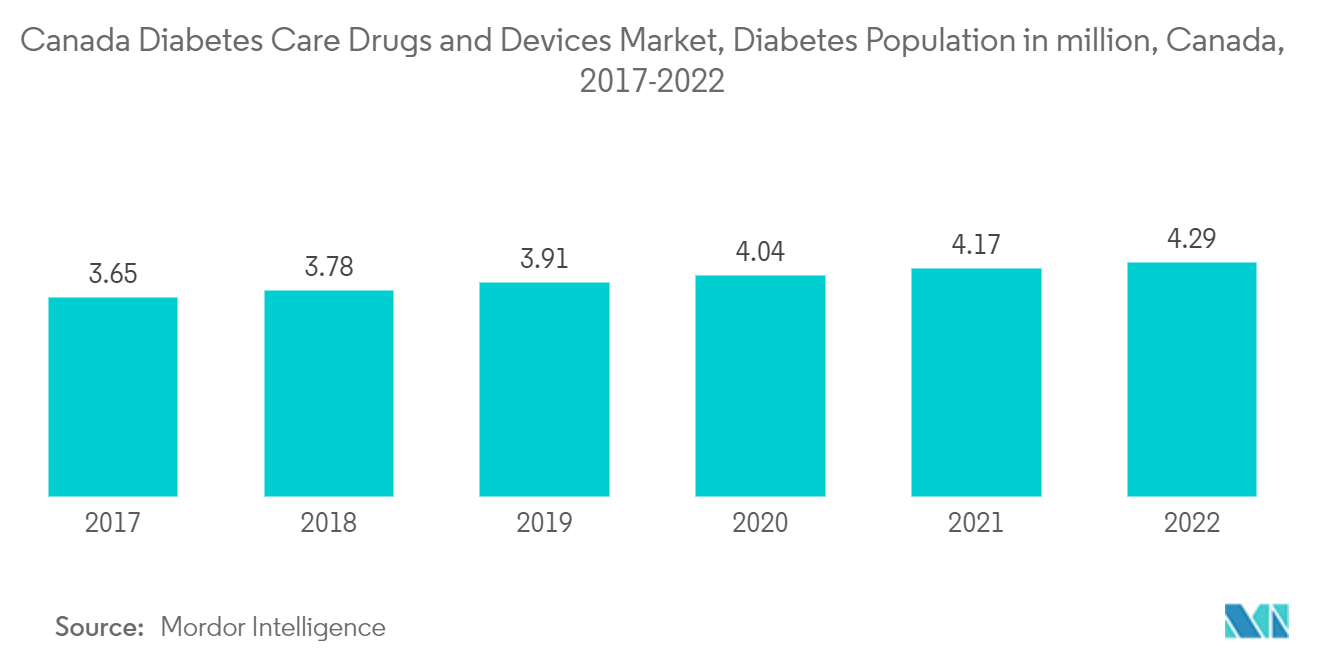Market Trends of Canada Diabetes Care Drugs And Devices Industry
The Continuous Glucose Monitoring Devices Segment is Growing at a Significant Pace
The Diabetes Canada Clinical Practice Guidelines review committee updated its recommendations for glucose monitoring in the current year, stating that individuals with Type 1 diabetes treated with basal-bolus insulin injections or an insulin pump should use real-time CGM, such as the Dexcom G6, to reduce A1C and increase time in range, reduce the duration and incidence of hypoglycemia, and, in adults, improve quality of life. 5 The guidelines also suggest that persons with type 2 diabetes who are not on target with basal-bolus insulin can utilize real-time CGM to lower A1C and duration of hypoglycemia.
Some private plans provide CGM coverage in Canada. However, public funding is only available for people accessing the Ontario Disability Support Program or the Non-Insured Health Benefits program for First Nations and Inuit. All others must pay the entire cost out-of-pocket, and there are no other provinces or territories that currently publicly fund this technology. CGM systems typically range in price from USD 3,000 to USD 6,000 annually. Many people cannot afford this cost. The cost can vary between manufacturers and is based on the components of the system and the frequency with which equipment needs to be replaced.
Through Canadian government encouragement, the usage of Continuous Glucose Monitoring Devices increased over the forecast period.

Increasing Diabetes population in Canada is Driving the Market
Diabetes Canada released new 2022 figures that show the continued rising trend of diabetes rates in Canada with no signs of leveling or decreasing. Diabetes affects more Canadians than ever and reasserts the need for further investment into diabetes research to help turn the tide. 'The new diabetes figures show a steady, continued increase in diabetes in our country with 11.7 million Canadians living with diabetes or prediabetes'.
Diabetes prevalence has increased dramatically in Canada during the last few decades, as have healthcare expenses. Financial constraints are becoming more prevalent when deciding how to fund health systems and services. Yet there must be a balance. Patients must continue to be at the forefront of choices about health policy, notwithstanding financial limitations.
Patients with diabetes should receive assistance in achieving their optimal health level, considering all relevant costs. In light of this, it may be beneficial to encourage insulin-naive patients to start using biosimilar insulin. When a patient's medical treatment is changed for factors other than their health and safety, this is known as non-medical switching.
In 2022, According to Canada Diabetes, more than 5.7 million Canadians are living with diagnosed diabetes (type 1 or type 2 diabetes). However, 11.7 million Canadians are living with diabetes or prediabetes, a condition that, if left unmanaged, can develop into type 2 diabetes. Diabetes also costs the healthcare system USD 30 billion annually to treat people with diabetes. The high prevalence of diabetes and its overwhelming impact on Canadian communities and the healthcare system means that we must further diabetes research.
Diabetes Canada and the Canadian Pharmacists Association (CPhA) are actively monitoring coronavirus issues, in collaboration with the Canadian local government and diabetes devices manufacturers, to remain available for all Canadians, and stated that 'based on the information from device manufacturers, there have been no COVID-19 related shortages reported in Canada'.
As a result, the diabetes drugs and devices market in Canada is predicted to expand gradually in the coming years.


